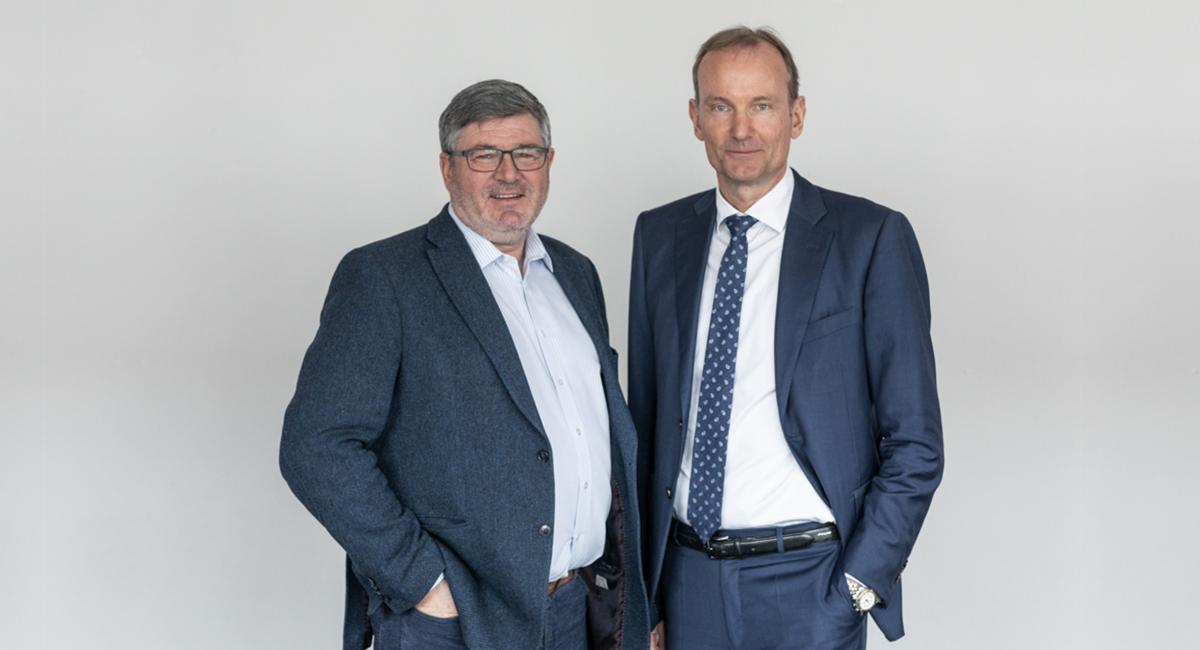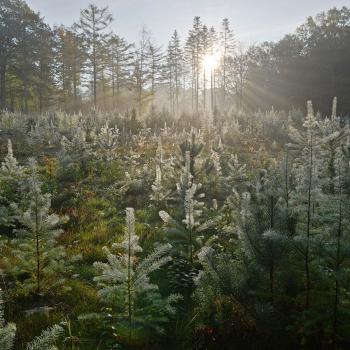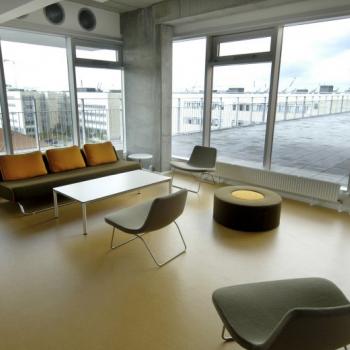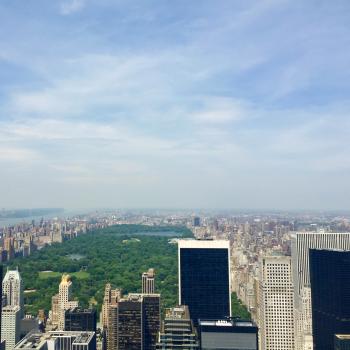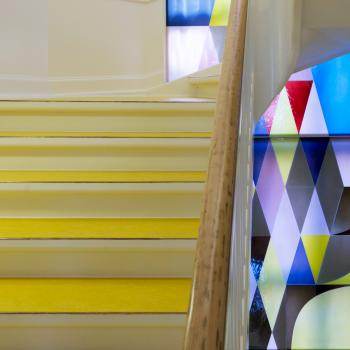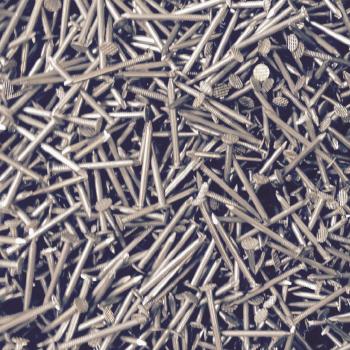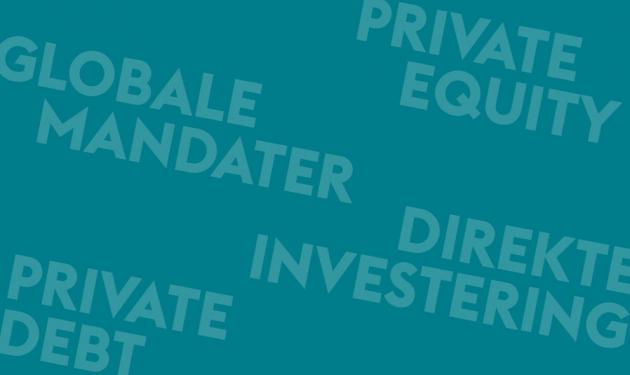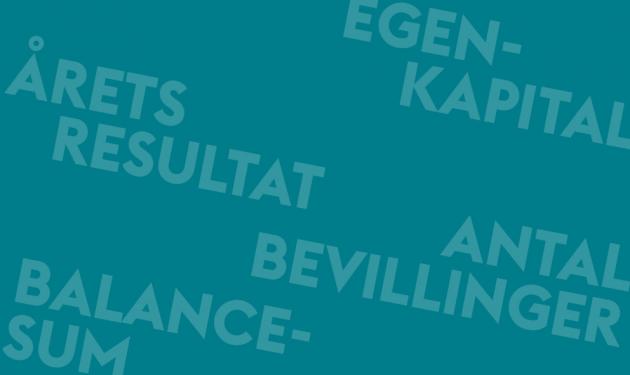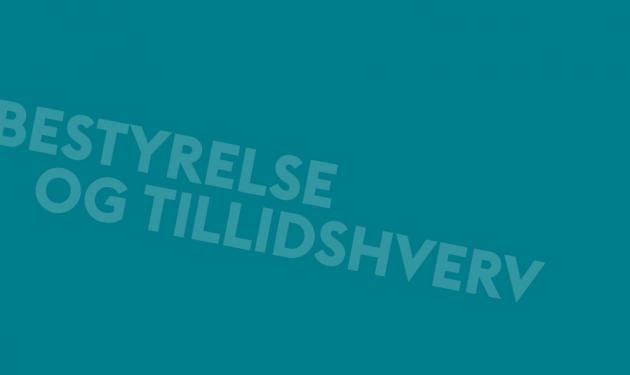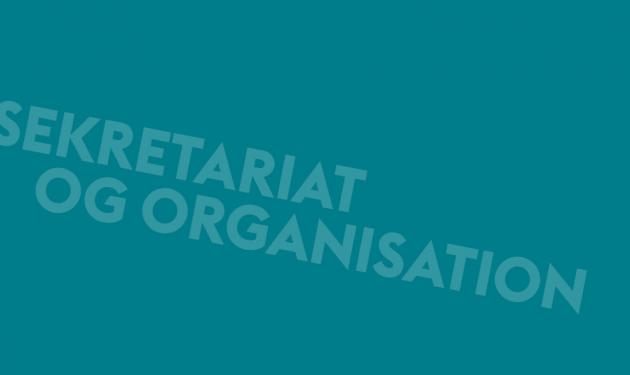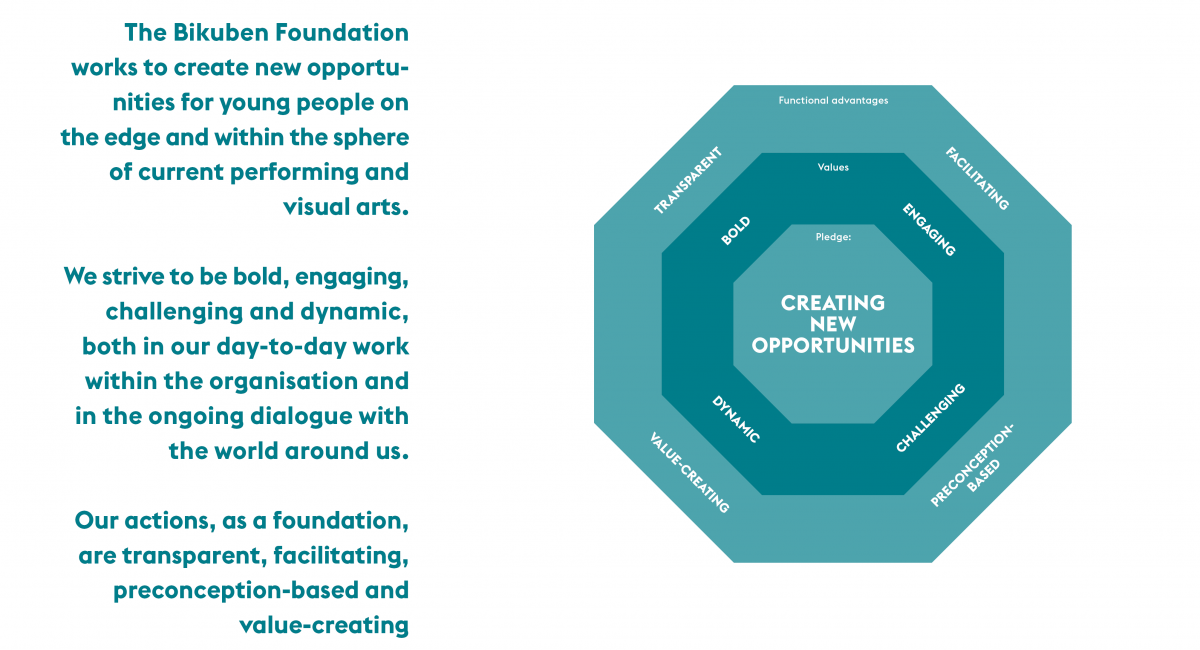Annual report 2020
To ensure that we are constantly making the optimal contribution to the areas in which we are active, we have in recent years concentrated our efforts on exploring and innovating our philanthropic toolbox, and 2020 was a breakthrough year for us in terms of undertaking new forms of collaboration and experimenting with new working methods.
In the social area, we initiated the innovation processes My Way Home (Min Vej Hjem) and Policy Lab, and thus tightened our focus on working with system innovation at the local and national policy levels. In the arts, we began a development programme for art institutions together with a number of partners. In addition, we investigated the importance of visual art in three local councils in order to invigorate the political conversation about art.
In the coming year, we will continue to refine our philanthropic tools to allow us to better accomplish our mission to create innovative opportunities. A central part of this development will involve exploring the ideal ways for physical frameworks to support the way we collaborate with actors in the social field and the arts. Rethinking the physical framework is a natural consequence of the sale, in the autumn of 2020, of our current premises, Fondenes Hus (House of the Foundations) and our impending relocation to no 29, Thoravej in Copenhagen’s Nordvest district.
SALE OF FONDENES HUS AND PURCHASE OF NO 29, THORAVEJ
The sale of Fondenes Hus on 1 October 2020 to P+, a pension fund for university graduates, is rooted in our vision of establishing a space for collaboration, development and innovation.
The time was in several ways ripe for us to relocate physically. When we took over the property at no 5, Otto Mønsteds Gade in 2013, it was with the purpose of promoting knowledge-sharing and competency-development while also creating a professional environment for foundations. At that time, there was no organisation that was responsible for facilitating knowledge-sharing amongst foundations. In the meantime, the Knowledge Centre for Danish Foundations has been established and today it undertakes this task in a highly professional manner, while at the same time generating relevant knowledge. Concurrently, our own development as a foundation makes a change of physical location timely. During the seven years we have operated Fondenes Hus, the nature of our activities and ways of collaborating have changed, and this places new demands on our facilities.
In recent years, we have taken part in the launch of initiatives that we continue to follow closely. Examples of this are: The Alliance, a Home for All (Hjem til Alle Alliancen), which we partner with and which shares an office with us; Art Hub Copenhagen, a gathering point for artistic development based on the visual arts; and, most recently, the establishment in 2020 of collaboration with artistic-development theatre HAUT with the purpose of creating a residency programme for performing artists at Fondenes Hus. We would like to devote even more attention to the close co-operation we have had with the other participants in these initiatives, and the physical framework determines to a significant degree how we can do that.
The sale of Fondenes Hus gives us a unique opportunity to consider how we can actively incorporate the physical framework into our philanthropic work. We believe that physical frameworks influence the role we can play as a partner and the space we can provide to the initiatives and partnerships we establish.
It was with great pleasure, then, that on 1 March 2021 we bought the building at no 29, Thoravej in Copenhagen’s Nordvest district. Property investment in the neighbourhood is picking up, and it is a popular location for artists and social activists. With its almost 5,000 square meters and four storeys, the building can be thought into our philanthropic work in countless ways.
During the second half of 2020, we therefore began, in collaboration with development and consulting firm Nordic Development Corporation, architectural firm Cobe and the Danish Design Centre, an internal development process that focused on the future of the foundation and the demands this future would place on the premises we occupy. The work is a natural extension of the work we did in 2020 in the social area and the arts, which generally saw us making development programmes available to partners and, to a much greater extent than previously, actively working with partners during programmes. Our efforts to think the premises at no 29, Thoravej into the on-going work of the foundation will continue in 2021, and we look forward to sharing our plan for renewal in 2021.
MY WAY HOME AND POLICY LAB: RETHINKING THE TRANSITION FROM CARE OUTSIDE THE HOME TO ADULTHOOD
In the social area, we initiated two innovation processes in 2020: My Way Home and Policy Lab. The two processes entailed a completely new way for us to work to effect change. Each should contribute in its own way to rethinking the transition from care outside the home to adulthood. At the municipal level, the work focused on innovating care outside the home in practice; at the national level it dealt with policy development.
My Way Home is a project involving the Bikuben Foundation, the Danish Design Centre and, initially, five local councils that sought to rethink support programmes for young people who have been removed from the home as they transition to adulthood. Two of the local councils chose to continue the work on their own. During the project, the remaining three local councils, Aarhus, Horsens and Nordfyn, learned how to look at care outside the home in terms of the needs of young people, and, using design-driven methods and input from experts, they turned their current practices on their ears and developed prototypes for new solutions that will be tested in the new year.
Inspired by the prime minister’s New Year’s address, and a proposal to reform care outside of the home as part of a forthcoming “children’s act”, we established the Policy Lab together with the National Association of Social Workers, the National Organisation of Social Educators, the National Association for Children’s Rights, the National Association for the Rights of Children Removed from the Home and the National Association of Daycare and Residential Care Providers. Our ambition was a genuine rethink of care outside of the home that was based on the experiences of young people who had been in the system and the barriers and potentials they experienced in their transition to adulthood. Our work in the lab led to the development of policy recommendations that called for a radical change in procedure regarding young people who have transitioned out of care, as well as the practices regarding care outside of the home in general.
The two processes were originally intended to be separate, but it quickly became apparent that there were strong synergies between them. While the local councils participating in My Way Home provided a municipal reality check of the recommendations from the Policy Lab, the recommendations from Policy Lab, for their part, fertilised the work the local councils were doing to develop solutions. In 2021, we will begin the next phase of work on both processes, during which the participating local councils will test the prototypes they developed as part of My Way Home. Meanwhile, together with Kraka Advisory, we will work with the input from the Policy Lab to give recommendations greater political impact by thinking about the issue from a legislative and socio-economic perspective.
SYSTEM INNOVATION THAT PUTS YOUNG PEOPLE IN FOCUS
Common to both processes is that young people who have been removed from the home have been a consistent focus of the work. We believe that their voices are crucial if we are to create change that makes sense to them , and they were invited to participate as experts by contributing their life experiences, just as the solutions and recommendations that have been developed have revolved around them.
To support the involvement of the young people, we worked closely with the National Association for the Rights of Children Removed from the Home, which works to draw attention to the needs of young people who have transitioned out of care. In 2020, we made a DKK 3.268 million grant to the association in order to support this effort, as well as the organisation in general and its public-affairs efforts. We will continue to work with the association in the My Way Home and the Policy Lab processes in 2021.
The two processes have, for the first time, brought together lawmakers, local stakeholders and civil-society institutions to formulate design-driven solutions. This has given us a unique insight into the experiences of young people who have been removed from the home, council social workers and the organisations involved with developing policy related to care outside the home. Our participation in the processes has made us more aware that we must create cross-silo, systemic solutions if we want to create lasting change in the social area,
We have noted with satisfaction that the government, with its proposed “children’s act”, shares our belief that we, as a society, must continue to support young people who have transitioned out of care until they have established a network, found a job or started school and found a place to live. We have yet to see any plans for how the government will do this. The experiences of the three local councils taking part in My Way Home and our collaboration with Kraka Advisory in the next phase of the Policy Lab will hopefully contribute to this.
We will continue to develop partnerships across disciplines and sectors and to innovate methods and solutions and thus promote lasting change. Young people’s needs and their life experiences must form the foundation of any solution.
SOCIAL INVESTMENT PROGRAMME TO HELP HOMELESS YOUTH AND CREATE SYSTEM CHANGE
Our work with The Alliance, a Home for All has shown us that there is a similar need to focus on system innovation.
The Alliance, a Home for All was established in 2016 with 19 partners specialising in various fields. The partners’ common goal was to reduce youth homelessness through innovative solutions and to create 2,000 homes for homeless young people over a ten-year period. However, through the work of the Alliance, it has become apparent that innovative housing solutions are not sufficient for addressing youth homelessness. A number of structural factors perpetuate the problem; the existing system for addressing homelessness needs to be reformed.
Together with the other members of the Alliance, we are therefore now working to develop a more active strategy that will involve national and local authorities, and which will include the participation of housing associations and civil society groups in order to remove the barriers to realising a new goal for the Alliance: to end homelessness by 2030.
At the end of 2020, we entered into a contract with The Alliance, a Home for All, the Social Investment Fund, Aarhus Council and the Council for Social Investment to establish Denmark’s first social-investment programme. The goal is to find housing for homeless young people in Aarhus, improve their overall well-being and to find a job for those who are capable of working. The method is based on the “housing first” concept, which is a well-documented method of integrating social support and housing initiatives.
Our choice of social investments as a tool to effect system change places the focus on attaining results that improve conditions for the individual while also easing the burden on public budgets. We see the method as a tool to challenge the barriers the system has created in the social area, where the benefit of an initiative is not always reaped by those who implement or fund them.
As a grant-making foundation, we provide loans to service providers. The money is repaid when they achieve the results they have agreed on with the local council and receive payment. In this manner, our capital is used as a deficit guarantee that can entice other organisations to make investments in the social area. We have provided DKK 3 million as a deficit guarantee for the Aarhus social-investment programme. The three-year programme will be launched in early 2021. We look forward to seeing what effect it will have on ending homelessness amongst young Danes and what it will teach us about the use of social investments in practice.
LIFE SKILLS AS THE PATH TO JOBS AND EDUCATION
In the social area, we also work to give young people on the edge more of the life skills they will need to find a job and get an education. Life skills encompass the competencies necessary for mastering all the demands, challenges and decisions that come with growing up: establishing and maintaining relationships, getting up in the morning, setting and pursuing goals and paying bills on time.
In recent years, we have funded initiatives that have involved collaboration amongst participants with the goal of creating solutions that can give young people more life skills. One of the central elements of the effort is for young people to use healthy relationships and alternative learning environments to gradually build the bridges that will lead to employment and education. An example of this is Opgang2, in Aarhus. Begun three years ago, the initiative, together with Aarhus Council, holds drama, music and visual-arts workshops to help young people build the bridges to creative and cultural firms that can lead to internships, employment or education. The workshops’ artistic processes move the young people from uncertainty about the future to a clear perspective about their prospects. Some of the efforts we have funded in recent years are still evolving, while others are beginning to show positive results. As with Opgang2, these initiatives can provide us with insight into the importance of interdisciplinary collaboration in supporting young people as they seek to identify the opportunities that can lead on to employment and education.
COLLABORATION WITH THE NORDIC CULTURE FUND TO DEVELOP ART INSTITUTIONS
In the arts, we work to create opportunities for artists and art institutions by helping them realise their potential. As part of our focus on creating opportunities for art institutions, we entered into a partnership in 2020 with the Nordic Culture Fund to develop a method that would contribute to the development of art institutions. In partnership with the Danish Design Centre, we developed a module-based pilot programme and invited the CPH Stage theatre festival, the Fix & Foxy theatre and the HAUT theatre for artistic development to participate because we saw that they had an attractive potential for development. During the programme, the three institutions worked, amongst other things, to develop business strategies and to identify specific development activities and opportunities for international collaboration.
Close collaboration with the Nordic Culture Fund saw us playing a new role as facilitator and consultant to art institutions. This has proven to be a useful working method that has the potential to strengthen art institutions in the long-term. Inspired by this, the Bikuben Foundation and the Nordic Culture Fund invited two visual-arts institutions to participate in a new development programme in 2021 that will include SMK - National Gallery of Denmark and ARIEL– FEMINISMS IN THE AESTHETICS, a platform for the development and dissemination of exhibitions centered on feminism in the aesthetic field. We hope the collaboration will lead to the further development of the method and continue efforts to identify the strategic and commercial opportunities of art institutions, which would have the effect of making their work, and, by extension, art as a whole, more significant.
STUDIO PROGRAMME MOVED TO ART HUB COPENHAGEN; NEW RESIDENCY FORMAT TOOK SHAPE
Due to measures imposed in the spring of 2020 to stop the spread of the pandemic, the artists in our studio programme had performances and screenings cancelled, and their opportunities to work in the studio were limited. In response, we extended their residencies by six months and, at the same time, initiated a development process in which the artists, together with an art consultant, took part in rethinking of the studio programme, focusing on entrepreneurship and international networking.
The artists’ recommendations for a revised studio programme included longer residency guarantees for participants and doing more to promote networking and international collaboration. While this process was on-going, Fondenes Hus was sold, which means we will no longer have access to the space that had been used for the studio programme. This created an urgent need to revise the programme for 2021. We saw an opportunity to test a “to-go” format that would open the programme to artists who have their own studios. The format will be tested in 2021. In addition, we saw an opportunity to establish a partnership with Art Hub Copenhagen, which works with artistic development and is built on a foundation laid during our studio programme. We will remain responsible for the studio programme, and, together with an external jury, we will continue to select participating artists, but, starting in 2021, Art Hub Copenhagen will manage the programme for us.
In the spring of 2020, we started the HAUT x Bikuben Foundation Residency Pop-Up, which has the goal of strengthening frameworks and processes within the performing arts. Partnering with the HAUT theatre for artistic development allows us to test the potential for a long-term studio residency to serve as a catalyst for innovative performing arts. A total of six performing-arts groups were offered residencies at Fondenes Hus during the two months we tested the initiative. HAUT subsequently published a report that shed light on the experiences of the participating groups. Experience has shown that performing artists have limited opportunity for artistic development, and that they often lack long-term access to a facility where there is room to develop ideas and discuss them with fellow artists.
In 2021, we will continue to work towards the potential establishment of a curated residency centre for artistic development in Copenhagen that would provide performing artists with the much-needed framework for improving their artistic practice and maturing artistic projects.
PUTTING ART ON THE POLITICAL AGENDA
Our overall purpose is to help artists and art institutions to realise their potential. A part of this effort, we believe, entails engaging legislators in a conversation that will make them more aware of the significance of art.
In the spring of 2020, we partnered with the Seismonaut consultancy and Aalborg, Odense and Vejle councils in order to create a knowledge base for this effort. Together, we developed and tested a new method that examines the impacts the visual arts have on those who experience them. We used a qualitative method that was developed with inspiration from the UK’s Cultural Value Project, which we wanted to test in a Danish context. Seismonaut conducted the qualitative survey, which included observations, interviews and conversations with 60 visitors aged 15 to 81 at three art museums in the three councils.
One of the study’s conclusions was that art can stimulate our emotions, thoughts and personal growth. It allows us to reflect on life, establish points of view or have our perception of the world challenged. We published the results in a report titled Billedkunstens Betydning (The Significance of the Visual Arts), which we launched in collaboration with Local Government Denmark, the national association of local councils, at the end of 2020 as an opportunity to put the significance of art on the political agenda at the local level. Our hope is that the study will inspire and contribute to political and administrative practice and move the conversation about the significance of art and our art institutions away from visitor numbers, admission fees and other quantitative data and towards qualitative insights into the thoughts, feelings and personal growth we experience in our encounter with the visual arts.
In a similar manner, the political conversation is the point of departure for the coffee club we run in together with the Kunsthal Charlottenborg exhibition space. Charlottenborgs Kaffeklub is a salon that brings the political world and the art community together for an open dialogue about visions for the future of cultural policy and artistic development. The purpose of the coffee club is to promote the spread of art in Denmark and to create an understanding of the significance art has for people and society.
We look forward to continuing to work with Kunsthal Charlottenborg and to hosting more coffee-club meetings in 2021 and in general continuing our efforts to invigorate the political conversation about art at the local and the national levels.
A GOOD YEAR FINANCIALLY IN SPITE OF THE PANDEMIC
We entered 2020 coming off a year in which our financial result was DKK 232.4 million, the highest amount to date. We didn’t expect that we would match that performance in 2020, particularly considering the turmoil caused by the pandemic. But, even though Denmark and the rest of the world struggled under the burden of Covid-19, the 2020 result was more than acceptable.
In 2020, the returns on our investments amounted to DKK 137.2 million, with a net profit of DKK 112.4 million. These results allowed us to maintain a relatively high level of grant-making despite the pandemic; in all, we made DKK 82.3 million in grants in 2020.
Achieving a satisfactory financial result during a period of uncertainty is, we believe, largely due to an investment strategy that focuses on long-term results. Since 2004, we have consistently increased our investments in private-equity and private-debt funds, so that today our portfolio is predominantly made up of unlisted securities. We have chosen to follow a long-term strategy for several different reasons. Firstly, we have learned that this produces relatively higher returns on investments than would be possible with a more traditional investment strategy. Secondly, the strategy has produced returns on investments that are better than could have been expected during a period when interest rates are close to zero. Finally, the long-term approach ensures us a more stable development in our returns, which is well-suited to an approach to grant-making that has increasingly become longer-term in nature. The returns on our investments in 2020 show that the strategy is robust in a situation like the Covid-19 pandemic, and no riskier than more traditional investment strategies that are primarily based on listed securities.
THE PANDEMIC INSPIRED INNOVATIVE ARTISTIC FORMATS AND SOCIAL INITIATIVES
We took several steps early in the spring lockdown to support our grantees as much as possible during the pandemic. First and foremost, we assured them that their funding would not be withdrawn. Furthermore, we supported a rethinking of activities related to grantees’ projects. In the social area, we made Covid-19-related grants to organisations that had yet to move their services online. In the arts, we made supplementary grants to grantees whose initiatives were interrupted, postponed, rethought in a digital version, or otherwise affected by the restrictions imposed by health authorities. In addition, we recognised that grantees would face bureaucratic requirements and offered them free accounting and legal advice, both so they would be prepared to apply for assistance and so that they were aware of their rights and obligations in the event a planned activity was cancelled.
During our spring application round for arts grants, we expanded the list of the types of projects that qualified for a grant to include innovative initiatives that would allow the public to experience the arts during a time when measures to control the pandemic remained partly in place. In connection with this, we joined with the National Arts Foundation, the Aage and Johanne Louis-Hansen Foundation, the Augustinus Foundation, the Obel Family Foundation and the Ministry of Culture to start an initiative called United for Art (Sammen om Kunsten). As part of the initiative, the art industry was called to use the pandemic as a catalyst for creating innovate formats and experiences that could also benefit the arts in the long-term. In addition to identifying ways for us to experience art during a period of imposed social distancing, the initiative suggested that there is some benefit to collaboration amongst foundations. The initiative was the first time that foundations that support the arts joined in a common effort to innovate and develop the arts. We hope that we can continue to do so in the future, as it makes art visible as a significant topic that ought to be prioritised. We look forward to the publication of selected case studies in the spring of 2021 as inspiration for others in the arts.
In the social area, we joined forces with the Tuborg Foundation and Mandag Morgen, a think tank, to map the innovative power of the pandemic amongst voluntary social-welfare groups and social-service providers. The three organisations released a report based on a survey of more than 900 organisations, expert interviews, and case studies. The survey showed, amongst other things, that eight out of ten organisations had done something to innovate in response to social-distancing and other Covid-19-related measures, and that almost half used the situation to test ideas that they had come up with before the outbreak of Covid-19. The study also showed that the cross-cutting collaboration in the social area underwent an almost radical change during the pandemic, with one in four replying that they had partnered with more groups than they had previously. The study indicated that the transition had generally been rapid and effective. We hope that we can build on these lessons in the social area so that we can promote cross-sectoral partnerships for the benefit of the socially vulnerable.
The past year was by all means a challenging year, and the developments we witnessed affected nearly every aspect of our daily lives. But it was also a year in which we, as a society, clearly saw the necessity of social programmes for the most vulnerable Danes. We also clearly felt the lack of art in our daily lives.
For the Bikuben Foundation, it was a year in which we learned a lot about ourselves as an organisation that interacts with other entities and about the working methods we use. It was also a year in which the preparations to acquire no 29, Thoravej took us a major step in the direction of a new Bikuben Foundation that we look forward to continuing down in 2021.
In 2020, grant distributions totalled DKK 89.9m distributed as DKK 42.4 m to young people on the edge, DKK 36.1m to current performing and visual arts and DKK 11.4m to other purposes. In addition, there was a carry-back of grants distributed in previous years in the amount of DKK 7.6m; and, thus the net result of grants paid equalled DKK 82.3m.
The Bikuben Foundation is a commercial foundation. We own various assets, each manged individually according to its purpose: some assets are held as investments and some are used for furthering the goals of the foundation.
Our assets that further the goals of the foundation include: Svanninge Bjerge, a unique forested area that we primarily use for social activities and three halls of residence that provide students a good base during their studies.
For investment purposes, we have DKK 1.6 billion placed in listed bonds and shares, as well as investments in unlisted private-equity and private-debt funds. In addition, we are the sole owner of Enkotec A/S.
The Bikuben Foundation is part of the community. We live off the revenue generated by our assets, while any profit the foundation makes forms the basis of our grants to projects that advance current performing and visual arts and improve the outlook for young people on the edge.
The UN Sustainable Development Goals (SDGs) set a framework for supporting sustainable social development.
The Bikuben Foundation has an interest in following and documenting how our assets contribute – or might contribute – to this development at various levels. Rewilding five-hundred hectares of forestland in Svanninge Bjerge helps us to contribute actively to the realisation of SDG 15: “Protect, restore and promote sustainable use of terrestrial ecosystems [...] and halt biodiversity loss.” At the same time, our grants within the social area and the partnerships we establish in our efforts to pull back young people from the edge further the realisation of the SDGs that address social sustainability. As to our assets, our halls of residence have been included in our work to reduce homelessness and give vulnerable young people a better starting point for completing an education (an initiative that relates to SDG 4: “Ensure inclusive and equitable quality education and promote lifelong learning opportunities for all”).
SVANNINGE BJERGE AND HØBBET
The Svanninge Bjerge natural area and the associated Høbbet Farm are located on southern Funen. Together, the two properties constitute a six-hundred-hectare area owned and managed by the Bikuben Foundation.
In 2005 and 2006, we acquired the largest and central parts of the area with the aim of preserving and developing the unique natural environment and landscape and, in doing so, provide the ideal habitat for animal and plant life for the benefit of present and future generations. Last year marked the fifteenth anniversary of the presentation of the vision for Svanninge Bjerge. Over the years, we have expanded the area by incorporating smaller adjacent tracts of land, most recently in late 2019 and early 2020. We manage the entire area with the goal of making it as biologically diverse as possible. Svanninge Bjerge is open to anyone who wants to enjoy the diversity of nature and experience the hilly, glaciated landscape and the picturesque views of the Danish archipelago and the mainland. Thousands of people visit Svanninge Bjerge each year. In 2018, together with the neighbouring Svanninge Bakker area, it was included in the Danish nature canon. Last year was the year the public discovered Svanninge Bjerge. It has become a popular destination, and the car park is occasionally filled. On some days this winter, there were as many visitors as on the busiest summer days just a few years ago.
Using nature for social purposes
In recent years, the Nature, the Key to a Good Life (Natur til et godt liv) initiative has made us increasingly aware of nature’s potential benefits for young people on the edge. In 2019, we launched the Nature, the Key to a Good Life Laboratory in partnership with the Forest and Landscape College at the University of Copenhagen, the Aalborg University Centre for Youth Research and a number of organisations and local councils. The goal of the three-year initiative (2019-2021) is to develop methodologies and explore how nature can be integrated into treatment and educational programmes. In 2020, the focus of the initiative was on competency-development amongst partner organisations, as well as the development of methods that will be detailed in the near future. Many of the activities take place in Svanninge Bjerge. Other partners in 2020 included: Slagelse municipality, Vantinge Heldagsskole (Faaborg-Midtfyn municipality), Multi Skive, DGI Storkøbenhavn, TUBA and Askovhus.
Wild forest and biodiversity in Svanninge Bjerge
In 2016, we began phasing out forestry operations in Svanninge Bjerge as part of a rewilding programme. Since then, we have made efforts to break up the uniformity created by commercial forestry. The aim is to create a more varied environment that encompasses large, natural, open spaces; vegetation consisting of low bushes and high trees of varying ages; expanses of wetlands; and, most importantly, an ecosystem that can support a rich variety of life. As of 1 July 2020, the bulk of the most invasive rewilding measures had been completed. Such measures are necessary to catalyse the natural processes that will return the managed forest to its natural state. The wild forest has been established.
The goal of rewilding is a constant increase in biodiversity in concert with the activities that take place in the area. It should be expected that work of varying intensity will still be required in parts of Svanninge Bjerge to promote biodiversity. We expect that adaptive management will be necessary for several years before the desired structures and variation in the area are achieved.
We hope that the wild forest will promote the establishment of more wild and biodiverse areas in Denmark as part of our efforts to support national objectives for uncultivated forest areas, as well as the UN’s goals for stopping species loss.
Svanninge Bjerge Research Station
We make the Svanninge Bjerge Research Station available to scientists and students from the University of Southern Denmark to conduct biological fieldwork, such as biodiversity monitoring. The University of Southern Denmark is a tenant of the research station, which is equipped with lecture halls, laboratories and accommodation.
THE BIKUBEN FOUNDATION HALLS OF RESIDENCE
The Bikuben Foundation has made grants to Kollegiefonden Bikuben for a number of years. The money has been used to build and operate three halls of residence, in the cities of Odense, Aalborg and Copenhagen.
Kollegiefonden Bikuben was established in 2001 with the purpose of offering students in the old Danish university cities access to modern housing. In May 2004, the Bikuben Kollegiet in Odense was completed. It contains 88 modern flats of various sizes and a range of communal facilities. In 2006, Kollegiefonden Bikuben welcomed 115 students to the Bikuben Kollegiet in Copenhagen’s Ørestad district. And, in 2008, the Bikuben Kollegiet in Aalborg, with a total of 64 flats, was taken into use.
The Bikuben Foundation and Kollegiefonden Bikuben merged in 2019. The combined foundation retains the name Bikuben Foundation. The aim of the merger was to allow for more flexibility in the operation of the foundation, which, ultimately, will allow us to make larger philanthropic grants.
Sustainability is a key factor in the operation of our halls of residence. We choose energy-efficient and durable solutions. The halls, therefore, make use of innovations such as intelligent lighting systems that turn off automatically. In addition, all halls of residence reduce their carbon footprint by using electricity generated at offshore windfarms.
The halls of residence promote social sustainability. As part of our Live Together (Bo Sammen) initiative, we allocate 10% of the flats in our Copenhagen and Odense halls of residence to young people on the edge, offering them a chance to get back on their feet and become part of their community. With this policy, we aim to contribute to a culture of reciprocity, mutual engagement and inclusion, and to build the basis for a sustainable society. This initiative is part of the Bikuben Foundation’s goal of ending youth homelessness.
In the light of our experience with the hall-of-residence model during the past four years, we decided in December 2020 to begin development of a new support model based on the Minimum Viable Product (MVP) method, a handheld teaching programme that will give us insight into how the overall action vision can be implemented. In collaboration with an external partner, we will investigate how homeless young people can use their residence in the Bikuben Kollegiet in Copenhagen to gain a toehold on the housing market, the educational system and the community. The aim is to learn enough by the end of the MVP period to be able to present a financially sustainable support model for the hall-of-residence model.
ACADEMIC GUEST HOUSE
Bikuben Foundation New York, Inc was established by the Bikuben Foundation in 2003. Two years later, we acquired a 1,300m2 property with the intention of establishing a hall of residence for Danes studying in New York City. Academic Guest House opened on 1 January 2008. It is situated on Manhattan’s Upper West Side, close to Central Park, and its twelve flats accommodate twenty-two students. To qualify for residence at the Academic Guest House, a Danish student or academic must have a formal agreement with an educational institution in New York City or with an educational organisation that offers master classes.
Due to the Covid-19-related restrictions that have been in place for most of 2020, we have reduced the capacity of the building and now admit a maximum of 12 students at a time. We assess how and to what extent we can accommodate students at the Academic Guest House on an on-going basis. When we admit students, it is on the condition that educational institutions in New York are open.
FONDENES HUS (HOUSE OF FOUNDATIONS)
In 2013, the Bikuben Foundation acquired the building at no 5, Otto Mønsteds Gade, in central Copenhagen, and established Fondenes Hus (House of Foundations) with the intention of promoting knowledge-sharing, competency-development and co-operation amongst foundations. The set-up allowed us to take advantage of the benefits of co-location while also working towards enhancing the transparency of the work foundations do.
In 2020, we decided to sell Fondenes Hus as part of a vision of establishing a space that would be focused on collaboration, development and innovation for the benefit of the two areas in which we work: the arts and social area. On 1 October 2020, ownership of no 5, Otto Mønsteds Gade was transferred to P+, a pension fund for university graduates. The Bikuben Foundation’s administration will relocate from Fondenes Hus after October 2021.
ENKOTEC A/S
Enkotec A/S is a company that is wholly owned by the Bikuben Foundation. Since 2006, when the Bikuben Foundation assumed ownership and added the company to our investment portfolio, Enkotec’s profits have been allocated entirely to funding the Bikuben Foundation’s philanthropic work.
Enkotec A/S is the world’s leading supplier of machines for making precision nails. For more than forty years, Enkotec A/S has been developing and refining machines for mass-producing precision nails for the building industry. Enkotec’s machines are designed to produce nails in mass quantities to keep unit costs down while, at the same time, maintaining a high level of quality. Moreover, the machines are more energy-efficient, make less noise and pollute less than competing products on the market. Thanks to a special technology, Enkotec’s machines do not require lubrication, as other nail-making machines do, which reduces the environmental impact. Environmental issues are generally a high priority for Enkotec A/S; its production is powered by sustainable energy sources, it has introduced a system for sorting used packaging and paper and it primarily serves organic food in its canteen.
In recent years, Enkotec A/S has been engaged in developing IoT solutions. Data generated by machines can make it possible to anticipate maintenance needs. Consequently, clients can plan servicing to optimise operations and avoid down-time, allowing for highly efficient production, regardless of a client’s location. As part of this, Enkotec A/S has developed a sales concept that allows clients to lease machines.
Enkotec A/S holds its suppliers to high quality and corporate social responsibility (CSR) standards; all suppliers must live up to Enkotec’s Supplier Code of Conduct, which is based on the UN’s Supplier Code of Conduct.
Company history
Enkotec A/S began as a PhD development project in 1981 at the NKT nail factory in Middelfart, Denmark. Enkotec A/S was incorporated in 1986 as an independent company and relocated to Skanderborg, where it is still headquartered. The Bikuben Foundation is committed to keeping Enkotec A/S’s manufacturing operations in Denmark. Since the acquisition by the Bikuben Foundation, Enkotec A/S has quadrupled in size.
Today, Enkotec A/S employs an average of fifty-three people and has about two-thirds of the global market share for high-quality nails. In addition to its headquarters in Skanderborg, Enkotec A/S has an office in the United States and three agencies in other countries that allow the company to cover the global market. There are more than eight hundred Enkotec nail-production machines in fifty countries worldwide.
Sparekassen Bikuben was established in 1857. It was the first savings bank to operate both a financial institution and a mutual-welfare society. The social aspect of its activity came in reply to the need for improved welfare services for the growing working class of Copenhagen. Today, the Bikuben Foundation uses its returns and holdings to make grants, primarily to the arts and social programmes, based on the fundamental ideas that shaped the savings bank: social responsibility, innovation and self-help.
Over the years, various mergers, take-overs and other developments have changed the framework and ownership of Sparekassen Bikuben and its successors. Several smaller charitable foundations grew out of these activities and later merged with foundations that had similar remits. In 2010, in the most recent such merger, BG Fonden was absorbed by Bikuben Fonden af 1989 (the Bikuben Foundation of 1989), the latter a commercially operated foundation that continues as the Bikuben Foundation. The Bikuben Foundation established Kollegiefonden Bikuben in 2001 in order to build halls of residence that allocate a number of flats for homeless young people. In 2019, Kollegiefonden Bikuben merged with the Bikuben Foundation, establishing in the process the commercially operated the Bikuben Foundation.
ASSETS
The assets of the Bikuben Foundation stem from the transition, in 1989, of Sparekassen Bikuben to Sparekasse Aktieselskab, a limited company. The foundation has a diverse investment portfolio that is managed with the goal of maximising returns and to use the proceeds to fund the foundation’s philanthropic activities. Our investment portfolio includes a careful balance of shares and credit bonds that reflects the foundation’s risk profile.
Active investment in listed securities is currently outsourced to two external managers, Danish Capital and SEB Asset Management, with identical mandates.
The Bikuben Foundation’s largest investments are in companies that are made through private-equity investments.
In addition, the Bikuben Foundation owns Enkotec A/S. Headquartered in Skanderborg, Denmark, Enkotec A/S develops and manufactures machines for the production of high-precision nails for the global building industry.
The Bikuben Foundation’s consolidated accounts include its own activities and the activities of Enkotec A/S, BIFI A/S, SKITSE ApS and Høbbet A/S. Høbbet A/S manages the properties and farms the land adjacent to the Bikuben Foundation’s Svanninge Bjerge natural area.
PURPOSE
According to its statutes, the Bikuben Foundation has the following purposes:
- to carry out financial activities through investments in shares or other participating interests and convertible debentures in commercial enterprises of every description;
- to provide grants, grant loans or in any other way encourage the operations of Danish enterprises for skilled trades and minor industrial businesses and, hence, contribute to the establishment of new enterprises within trade and light industry, as well as contributing to development projects within the framework of such enterprises;
- to serve non-profit and charitable objects, subject to the Board’s discretion, comprising objects that would have been natural for Bikuben to support, taking its history and identity into account.
MAIN ACTIVITIES
The Bikuben Foundation’s philanthropic work takes place in Denmark and, to a small extent, in Greenland. The foundation seeks to create new opportunities for young people on the edge of society and helps artists and cultural institutions find new paths. The foundation’s social initiatives focus mainly on young people aged thirteen to thirty facing complex social challenges. Within the arts, the foundation focuses mainly on the performing and visual arts. Every year, the foundation presents the Vision Exhibition Award, which supports the realisation of visionary visual-arts exhibition formats. The Bikuben Foundation also hosts a series of debate salons focusing on issues, trends and developments within the performing and visual arts.
In addition, the Bikuben Foundation recognises extraordinary achievements in culture and the social area via the Crown Prince Couple’s Awards.
The Bikuben Foundation owns and manages the Svanninge Bjerge natural area, which is used, amongst other things, as the setting for the foundation’s nature-based social initiative, Nature, the Key to a Good Life.
The Bikuben Foundation provides funding for the Bikuben Foundation New York, Inc and formerly provided funding to the now-defunct Kollegiefonden Bikuben. These funds have been used to operate an Academic Guest House in New York City and to build and operate three student halls of residence in Denmark, in the cities of Odense, Aalborg and Copenhagen.
The Board of Directors is made up of six members elected by simple majority of the board for two-year periods. The board elects its own chair; it may also elect a vice-chair.
Potential new board members are identified by means of an exhaustive recruitment process that often involves impartial external assistance. The goal of this is to ensure that the Board possesses the highest qualifications in the areas within its remit: management, investment, business administration, art, and social issues.
Guided by the principles of foundation governance, the board is responsible for the overall management of the foundation. The board approves the strategies for foundation activities and investments. It determines the general principles for the foundation’s work and ensures that they are being lived up to. The board advises the management. The board is responsible for conducting an annual evaluation of its own work.
During its 18 June 2020 meeting, the Board of Directors unanimously voted to amend section 6 of the Bikuben Foundation Articles of Association. The change increases the number of times a board member can be re-elected to five from four. As a result, Board Members may now sit for a total of twelve years. The statutory age limit for Board Members was raised to seventy from sixty-eight. Board Members are eligible for re-election up to and including the year in which they turn sixty-nine. Board Members must resign no later than 1 May of the year in which they turn seventy.
The Board of the Bikuben Foundation held nine meetings in 2020, two of which were on-line, two of which were in writing and one of which was a strategy meeting. In addition, the chair and the vice-chair attended meetings prior to the four physical meetings.
Each board member receives DKK 200,000 / year in remuneration for their service. The chair receives three times that amount, and the vice-chair receives twice that amount. No other board members receive additional remuneration from the Bikuben Foundation.
The CEO of the Bikuben Foundation is Søren Kaare-Andersen. He receives an annual salary of DKK 2,392,504.
In 2020, the foundation had an average full-time staff of 26 people, of which an average of 14 people performed duties related to administration, projects, the Bikuben Foundation New York, Inc or Høbbet A/S and BIFI A/S. A further 53 people are full-time employed by Enkotec A/S.
The foundation decided in 2019 to establish a whistle-blower system for its administrative staff. The system was rolled out in 2020. We want an open and transparent corporate culture in which anyone can freely report suspicions of irregular or illegal behaviour that may have been experienced by our employees, management, the board of directors, customers, grantees, partners or other stakeholders.
In 2020, no incidents were reported via the whistle-blower system.
You can read the full version of the Bikuben Foundation's annual report 2019 here (in Danish only)
Read annual reports from 2019, 2018, 2017, 2016 and 2015 here (in Danish only)
Read annual reports for SKITSE ApS 2020 here (in Danish only)
Read annual reports for BIFI A/S 2020, 2019, 2018 and 2017 here (in Danish only)
Read annual reports for Høbbet A/S 2020, 2019, 2018, 2017, 2016 and 2015 here (in Danish only)
Read annual reports for (the former) Kollegiefonden Bikuben 2018, 2017, 2016 and 2015 here (in Danish only)
Foundation Governance
The Bikuben Foundation embraces the Recommendations on Foundation Governance such as they have been set out by the Danish Ministry of Industry, Business and Financial Affairs.
